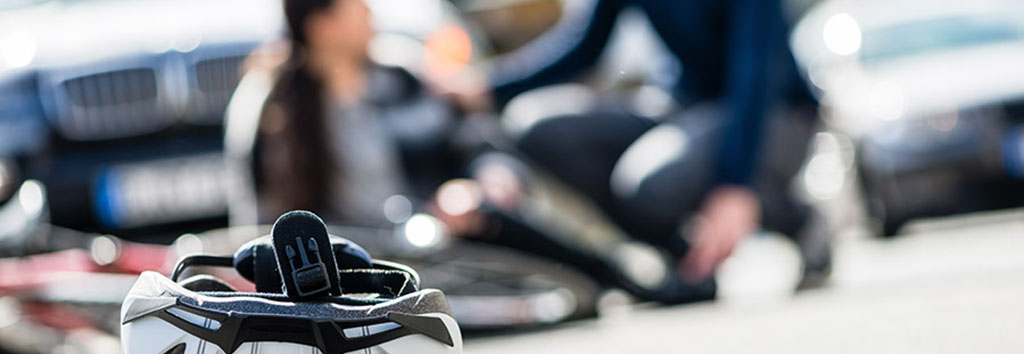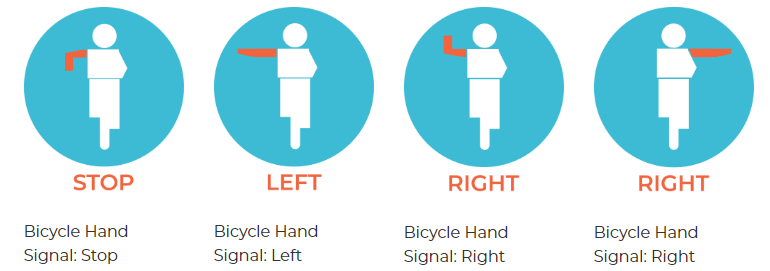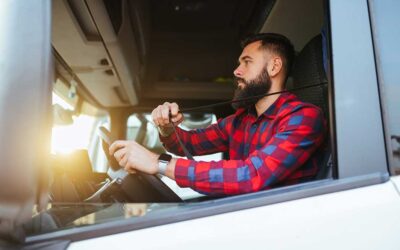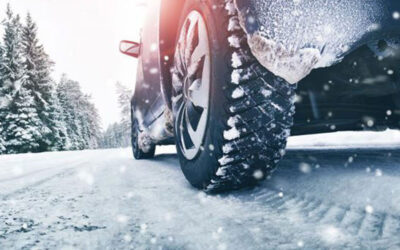
Noticing more motorcyclists and bicyclists on the road? That’s because there are. Maybe it’s the warm weather, perhaps surging gas prices, or possibly that long 18 months of being cooped up inside finally pushed people to pursue their dream of owning a hot rod. Either way, your delivery drivers are being asked to share the road with more two-wheeling motorists.
As a business owner, there’s not much you can do to reduce the number of bicycles, eBikes, or motorcycles within your delivery radius. But what you can do is help your team understand the severity and frequency of automobile-to-cyclist incidents, and equip them with the skills and knowledge to prevent a tragedy.
Dangers of Delivering With Motorcycles on the Road
Unfortunately for delivery operators, incidents occur most frequently during peak delivery times. Over 45% of all incidents involving motorcycles happen between 3 pm. and 9 p.m. During weekdays, incidents most frequently occur during rush hour (3 p.m. to 6 p.m.) and on the weekends, between 6 p.m. and 9 p.m.
It is important to regularly remind your team that there is no such thing as a “fender bender” when a passenger vehicle collides with a 2-wheeled, open-air vehicle – injuries are often severe and the burden for all involved is long-lasting.
Knowing what to anticipate from a cyclist (motor or pedal-powered) before hitting the road is the best way to reduce the odds of being involved in an accident. Teaching your team what to anticipate, how to remain alert, how to assess a situation, and respond quickly and correctly can significantly decrease the chances of a crash.
10 Safety Tips for Delivery Drivers Sharing the Road With Cyclists
1. Double-Check Blind Spots
The NHTSA states the majority of multi-vehicle motorcycle crashes are generally caused when the other driver simply doesn’t see the motorcyclist. Smaller vehicles can be hard to see in side-view mirrors if you’re not explicitly looking for them, especially if it’s dark outside. Check them once; check them twice. Maybe check them three times because the simple task of taking an additional look at your blind spots before turning or changing lanes could quite literally save a life.
2. Signal in Advance
Let everyone know what you’re going to do well in advance of doing it. Of course, this means drivers need to understand and know their route in advance of leaving the parking lot. Don’t let turns sneak up, and don’t change lanes rapidly. Most states recommend signaling 100 feet before a turn, and for 5 seconds before making a lane change. While this is generally a good practice no matter the driving situation, it’s especially important if you notice a bicycle or motorcycle coming up behind you. You’ve probably experienced some sort of cyclist pulling up next to your vehicle at an intersection. Signaling well in advance will inform the driver of your intentions and hopefully influence theirs.
3. Keep Your Distance
Stay at least four seconds behind a motorcycle at all times in order to give yourself enough time to react to whatever they do. And, the faster you’re going, the more time you should allow. Do not rely on brake lights to know when to slow down. Motorcycles and scooters are smaller and lighter than passenger vehicles. It takes less time for them to come to a complete stop than it does a full-size car — so they may wait longer to brake. Additionally, a motorcyclist may relax the throttle or downshift to reduce their speed without needing to use the brake.
Last Note on Lights:
Many older motorcycles do not have self-canceling turn signals. This means they could be driving down the highway with a signal on with zero intention of changing lanes. Or perhaps they left their right turn signal on, but are actually turning right. Again, give plenty of distance so you’re ready when the rider eventually does make a turn.
Many two-wheeling operators will use hand signals to communicate turns, lane changes, and stopping/slowing. Learn them:

4. Turn With Caution
Always assume that there’s a hazard before turning, especially left. Intersections can be danger zones. According to driving-tests.org, the largest independent driver education provider in the US, many accidents involving cars and motorcycles occur at intersections, particularly blind ones. As stated in the last bullet, it’s easy to misjudge a motorcyclist’s speed and distance – give them plenty of time and space to get through the intersection before you turn. It’s better to wait those few extra seconds. Are you noticing a theme yet?
5. Music
Keep it down. Even if your eyes don’t detect a motorcycle, your ears can help you if you give them a chance. While we don’t want to kill your vibe, your stereo volume (especially while on the job) should be set low enough so you can easily hear horns, sirens, and other sounds that will keep you aware of road hazards.
6. Keep Your Head on a Swivel
Check all around you before pulling forward and backward. Assume bicyclists, motorcyclists, pedestrians and more are in the crosswalk, bike lane, sidewalk, or in general, around your vehicle. After a delivery, make sure to take the time to physically turn your head and look side-to-side to check if anyone is coming. If there is, make eye contact and be certain it’s safe to proceed. Make sure to give the other person the right of way, even if technically they don’t have it — better for you to watch them get out of your path than to hope they’ll wait for you.
7. Be Considerate When Passing
It often feels like motorcycles are doing most of the passing. But in the event you’re planning to make a move around them, leave a couple of extra feet of space between you and the cyclist than you would with a regular passenger car. Be aware that they may have to downshift and weave to avoid bumps and hazards on the road. Before passing, double-check to see that there isn’t anything possibly obstructing their path that will force them to divert their course to the left. And, know that your speed could result in a gust of wind that could cause them to become unstable or blow the rider off the road. Make sure to give them a heads-up by signaling before passing to prepare the cyclist properly.
8. Stay Calm
It can sometimes be frustrating to drive behind a cyclist that you can’t pass, especially if you’re behind schedule. Take a couple of deep breaths. Be courteous. You do not want to put pressure on the rider and stress them out; that’s when accidents happen. Yes, the driver, the business owner, and the customer all care about the speed of delivery…but they all care more about the safety of employees, bystanders, and the brand’s reputation of responsibility within the communities they serve.
9. Be Aware of the Weather
If bad weather conditions occur, be extra wary and hyper-vigilant of riders on the road. Rain and wind can make it difficult for a rider to keep control of their vehicle. It’s also much harder to spot them. Since summer storms tend to pop up at a moment’s notice, a biker or motorcyclist could be dealing with an unexpected and unpleasant situation. If you encounter a rider in bad weather, expect that they will drive unpredictably. It would be best to keep your distance.
Don’t forget, this doesn’t mean delivery drivers should skimp on safety during a beautiful blue-bird day. The NHTSA reported that 97% of deaths occurred on a clear/cloudy day. So, no matter the weather always be on high alert.
10. Watch Out for Lane-Splitters
Lane splitting is when a motorist rides between the lanes (on the white dashed line). This can be dangerous if a car is switching lanes and isn’t paying close attention to what’s going on around them. Lane splitting is technically illegal in all states except California. However, in many states, it’s either not mentioned and not specifically prohibited, has a modified version legalized, or is considering becoming legal.

Why? Because in some cases, it can promote safety. Riders use lane splitting to mitigate the risk of getting hit by moving out of the driver’s blind spot or by getting out of the way to avoid a rear-end collision. If the rider can justify this maneuver in the name of safety, they likely will not be held at fault in a collision situation.
Finally, let’s be honest – not all the bikers out there are operating their vehicles as safely as possible. Let them do their thing, stay calm and steer clear — everyone will be safer if that motorcycle that’s speeding and weaving in and out of traffic gets out of your way and down the road.


